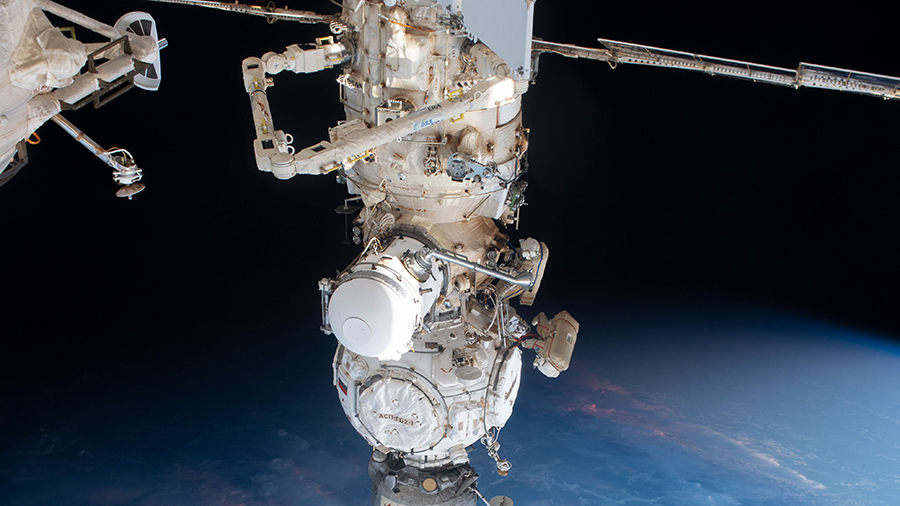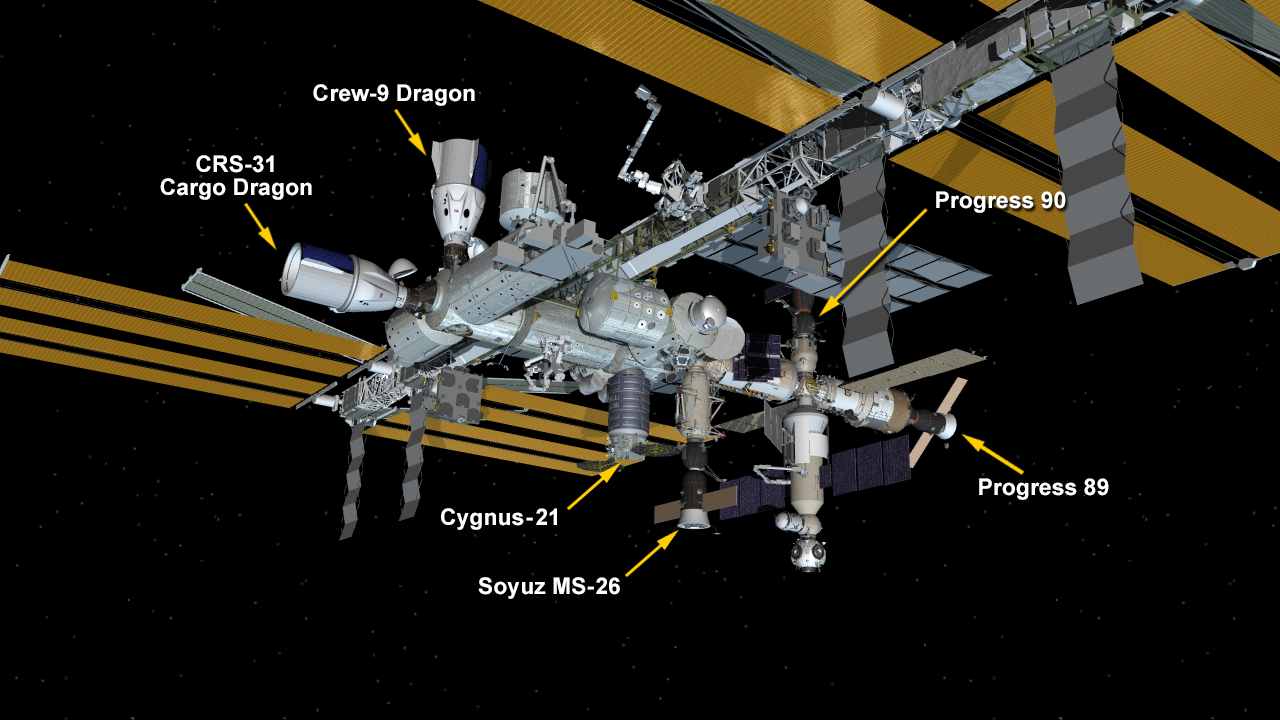
Science hardware installations wrapped up the week for the Expedition 72 crew members aboard the International Space Station. The cosmonauts also slept in on Friday following a spacewalk the day before.
NASA Flight Engineers Don Pettit and Nick Hague finalized the installation of the European Enhanced Exploration Exercise Device that provides advanced bicycling, rowing, and resistive capabilities in the Columbus laboratory module. The astronauts checked the fit of the workout gear’s vibration isolation system, installed grounding brackets, greased rails, and tested the device’s motion. The small and compact futuristic exercise hardware will be evaluated in the orbital outpost’s microgravity environment before being used on longer term missions to the Moon, Mars, and beyond.
Hague also joined Commander Suni Williams and Flight Engineer Butch Wilmore, both NASA astronauts, in the Tranquility module for more installation work. The trio outfitted the Nanoracks Bishop airlock with a variety of hardware after it was berthed to Tranquility and pressurized following robotic transfers for scientific work at the beginning of the week. Wilmore completed the Bishop configurations at the end of the day after he installed computer hardware.
The orbiting lab’s three cosmonauts from Roscosmos slept in on Friday following a seven-hour and 17-minute spacewalk on Thursday. Flight Engineers Alexey Ovchinin and Ivan Vagner installed a celestial X-ray investigation and removed older experiments for disposal during the spacewalk. Flight Engineer Aleksandr Gorbunov remained inside the space station monitoring the spacewalkers and maneuvering Ovchinin with the European robotic arm (ERA). The trio spent Friday cleaning spacesuits and returning the ERA to its stowage position on the Nauka science module.
The seven astronauts and cosmonauts will spend Christmas and New Year’s Day orbiting Earth taking time to relax, open gifts, share a meal, and talk to family. The orbital septet will go into 2025 continuing more advanced space research benefitting humans on and off the Earth. The next space station blog is planned to publish on Jan. 6.
Learn more about station activities by following the space station blog, @space_station and @ISS_Research on X, as well as the ISS Facebook and ISS Instagram accounts.
Get the latest from NASA delivered every week. Subscribe here: www.nasa.gov/subscribe









